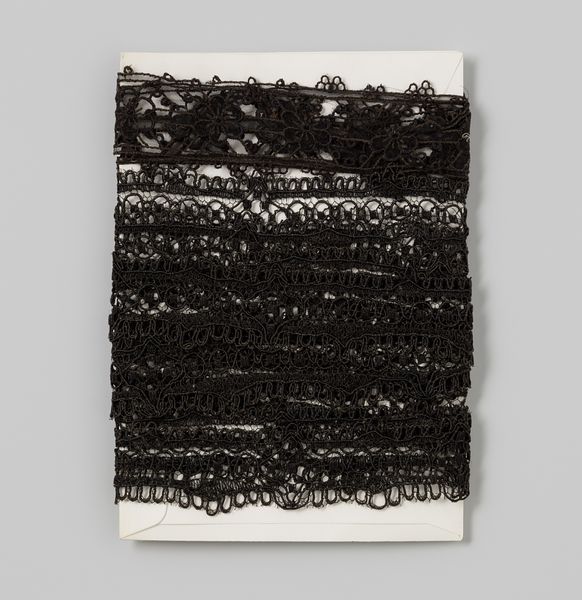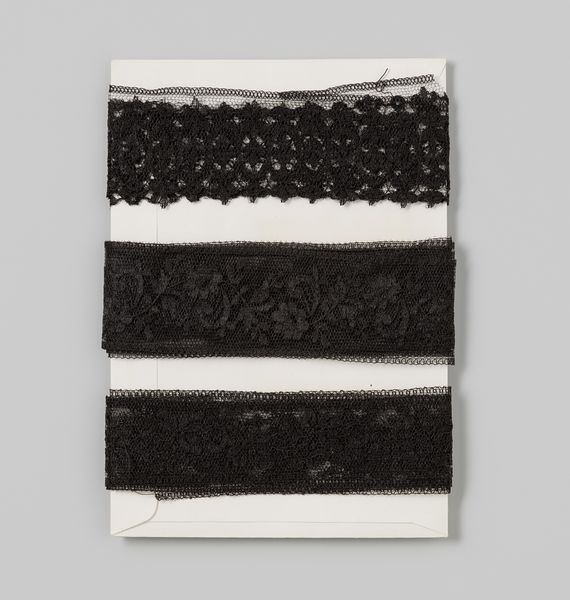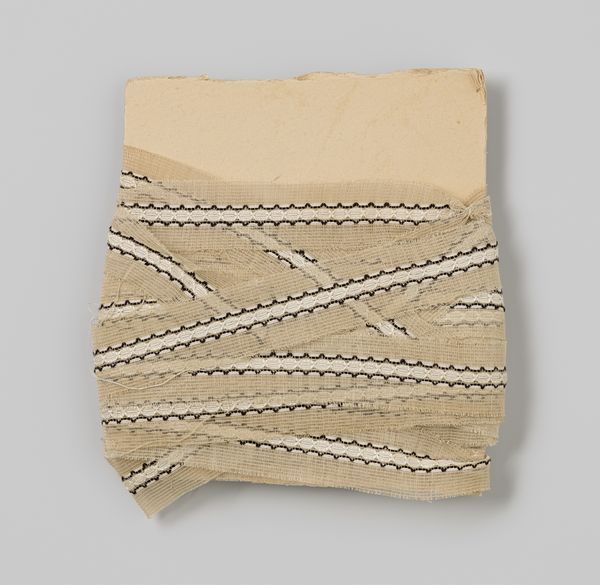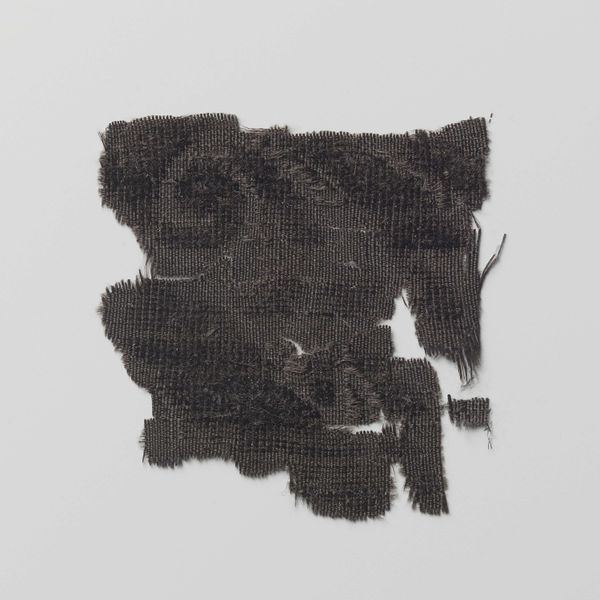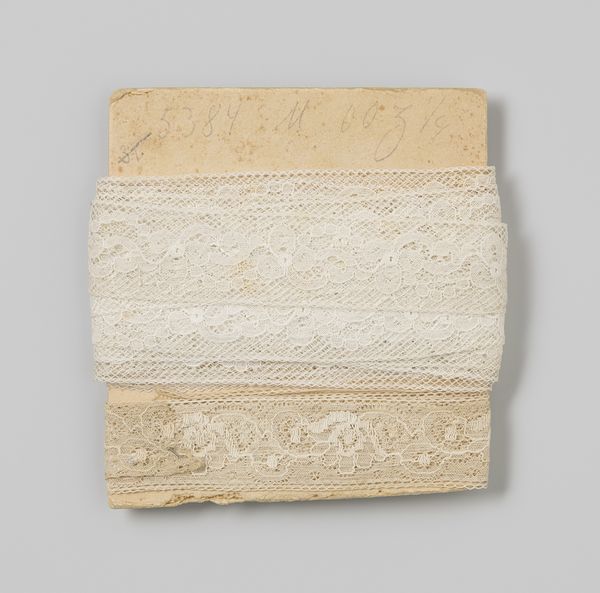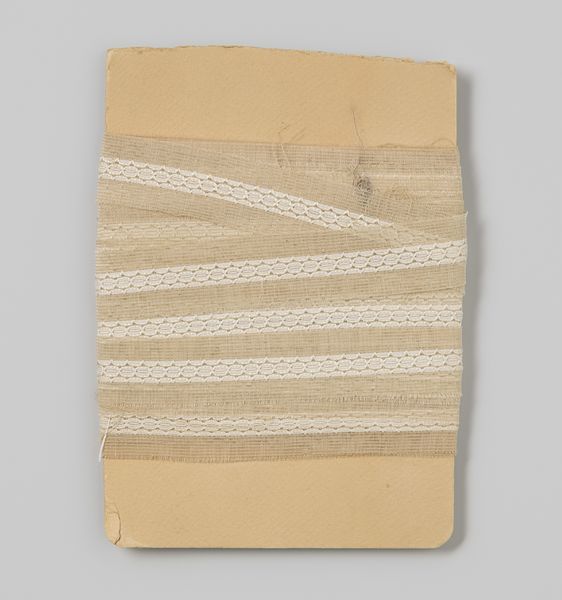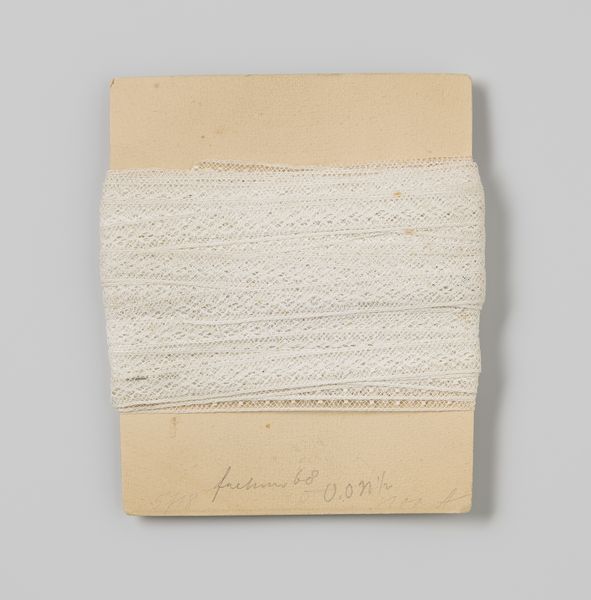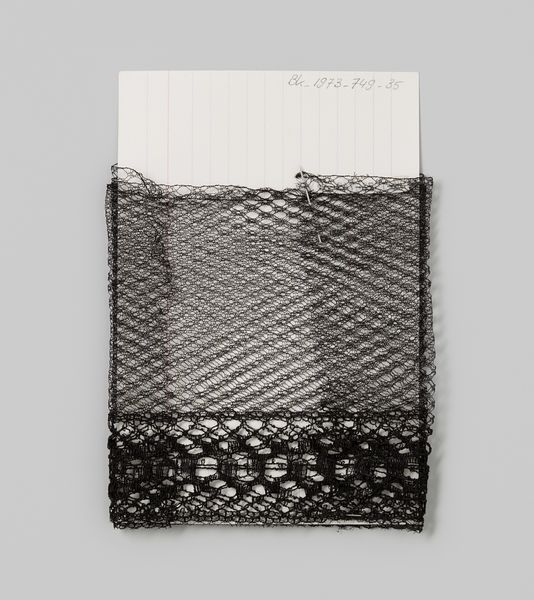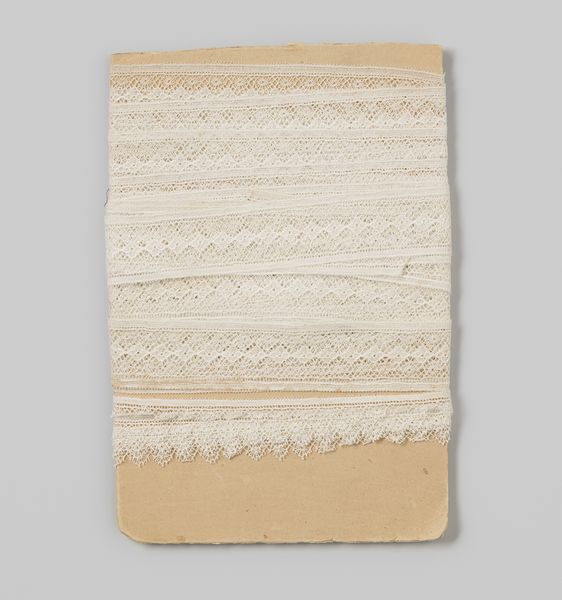
mixed-media, collage, textile
#
mixed-media
#
collage
#
textile
Dimensions: height 2.5 cm, width 7.2 cm, length 19 cm, width 16 cm
Copyright: Rijks Museum: Open Domain
Curator: Here we have Franje, geschulpt, op tule, zwart—"Fringe, scalloped, on tulle, black"—which we believe dates to around 1920. It's presented as a mixed-media piece, really a collage, incorporating textile elements. Editor: My first thought is mourning. It has a somber beauty, this swatch of black lace against the card, like a preserved relic of another time. Curator: The darkness certainly speaks. Consider the historical context—this period immediately following the First World War. Black lace was no longer solely a symbol of mourning, but perhaps also one of quiet resilience, adapting to the changes in society. Editor: Right. Lace historically represents both delicacy and power. The intricate patterns, often concealing or revealing, speak to codes of courtship, wealth, and status. Black lace takes on a more ambiguous character though, hinting at subversive roles. Curator: Absolutely. Think about the changing role of women at the time. This lace could adorn a garment, signaling tradition, yet that garment might be worn by a woman now demanding suffrage, rejecting earlier constraints. Editor: The symbolism is layered. It’s dark but fine; a display of artistry, even in utilitarian contexts. Black carries complex emotional and cultural baggage—authority, mystery, and a sophisticated negation. It pushes away while tempting the viewer closer. Curator: Note also the materials themselves, a "found" assemblage on cardstock with almost scientific recording written at the top, speaking volumes about material studies in this time frame. This piece offers insight into the domestic sphere of dressmaking and material reuse during a time of post-war recovery. Editor: Seeing that writing lends a whole other feel: This piece may be part of a collection of materials or possibly used in tailoring? I am struck that these pieces have meaning together. The texture contrasts—the coarse fringe above more tightly woven areas—provide great richness. Curator: I agree. Its humble, everyday origins shouldn't be overlooked. This sample could speak to both innovation in textile arts but moreover accessibility of what would have only ever been luxury products. Editor: Thank you. It's prompted a whole series of associations for me that reach far beyond this swatch of material itself! Curator: Indeed. It is important that we bring the past into today's cultural context, offering a new means for understanding complex themes that bind human expression and identity.
Comments
No comments
Be the first to comment and join the conversation on the ultimate creative platform.
